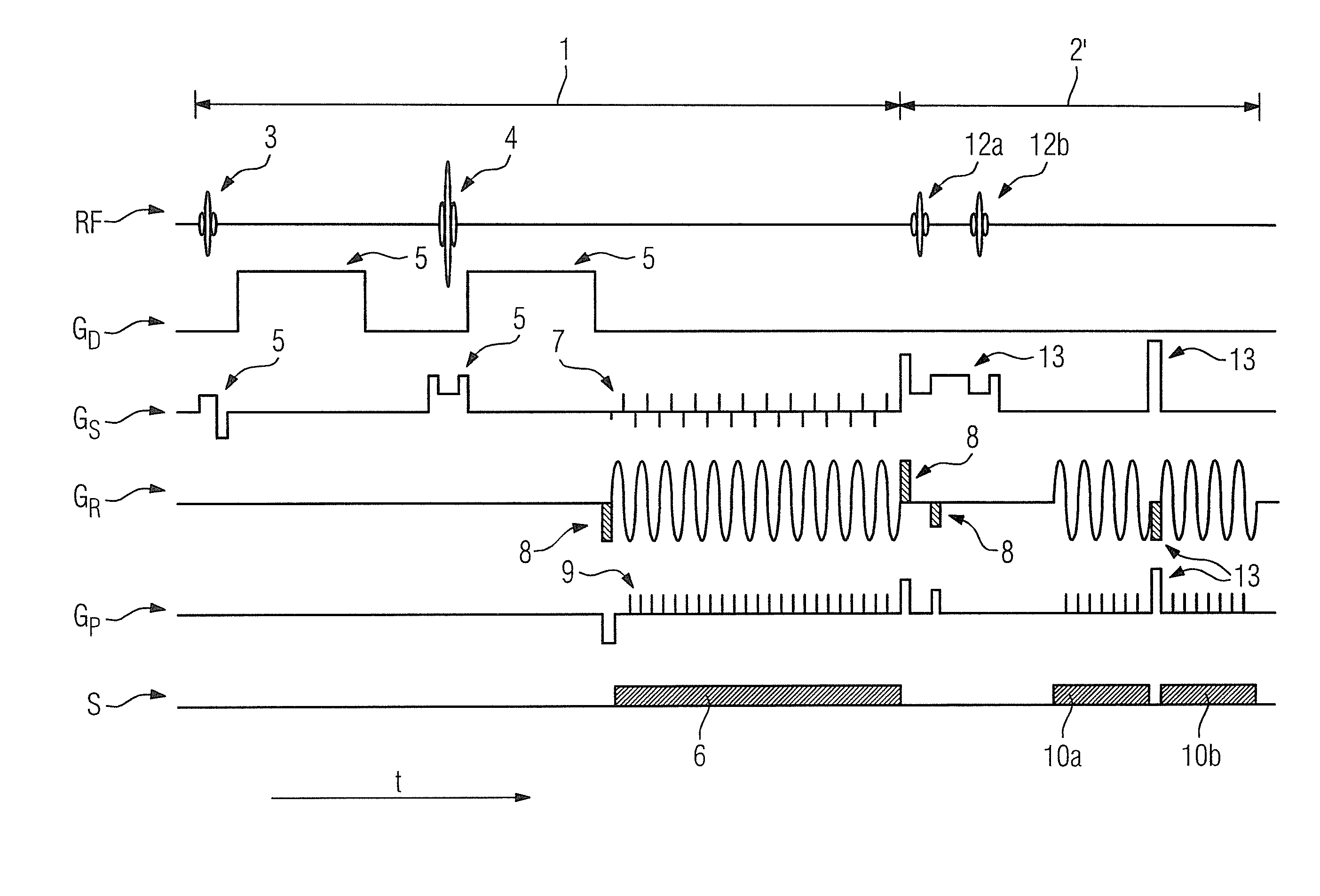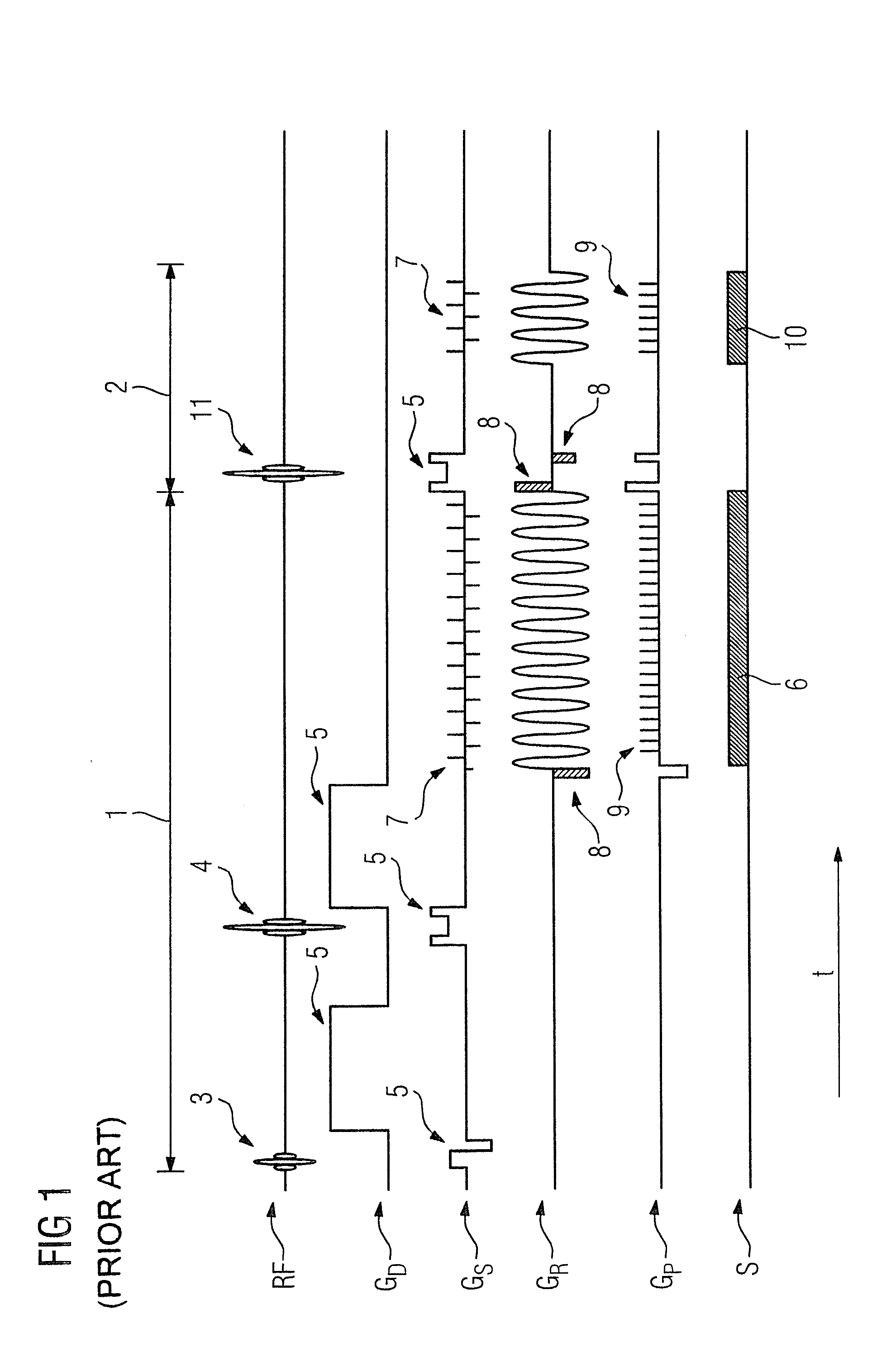Method and magnetic resonance system for acquiring magnetic resonance data
a magnetic resonance and data acquisition technology, applied in the field of magnetic resonance data acquisition, can solve the problems of weak phase errors with a highly non-linear performance, simultaneous imaging of several slices, and less easy identification of slice-specific phase errors, and achieve the effect of improving the quality of magnetic resonance data
- Summary
- Abstract
- Description
- Claims
- Application Information
AI Technical Summary
Benefits of technology
Problems solved by technology
Method used
Image
Examples
Embodiment Construction
[0032]FIG. 1 shows the basic rs-EPI-magnetic resonance sequence known from the prior art for the purpose of acquiring magnetic resonance data for diffusion-weighted imaging. In this embodiment, magnetic resonance signals of two slices should be recorded simultaneously in the manner known from the prior art, which means that the measured magnetic resonance signal is composed of the superimposed individual signals of both slices. In order to separate the individual signals and thus obtain the slice-specific magnetic resonance data, the well-known slice GRAPPA algorithm is used as a reconstruction algorithm. It is generally known that for the computation of coefficients this requires slice-specific reference data relating to the slices to be acquired. In the magnetic resonance sequence known in the prior art, which is shown in FIG. 1, the reference data are acquired in the conventional manner at the beginning of the total measurement in that each of the two slices is excited individual...
PUM
 Login to View More
Login to View More Abstract
Description
Claims
Application Information
 Login to View More
Login to View More - R&D
- Intellectual Property
- Life Sciences
- Materials
- Tech Scout
- Unparalleled Data Quality
- Higher Quality Content
- 60% Fewer Hallucinations
Browse by: Latest US Patents, China's latest patents, Technical Efficacy Thesaurus, Application Domain, Technology Topic, Popular Technical Reports.
© 2025 PatSnap. All rights reserved.Legal|Privacy policy|Modern Slavery Act Transparency Statement|Sitemap|About US| Contact US: help@patsnap.com



